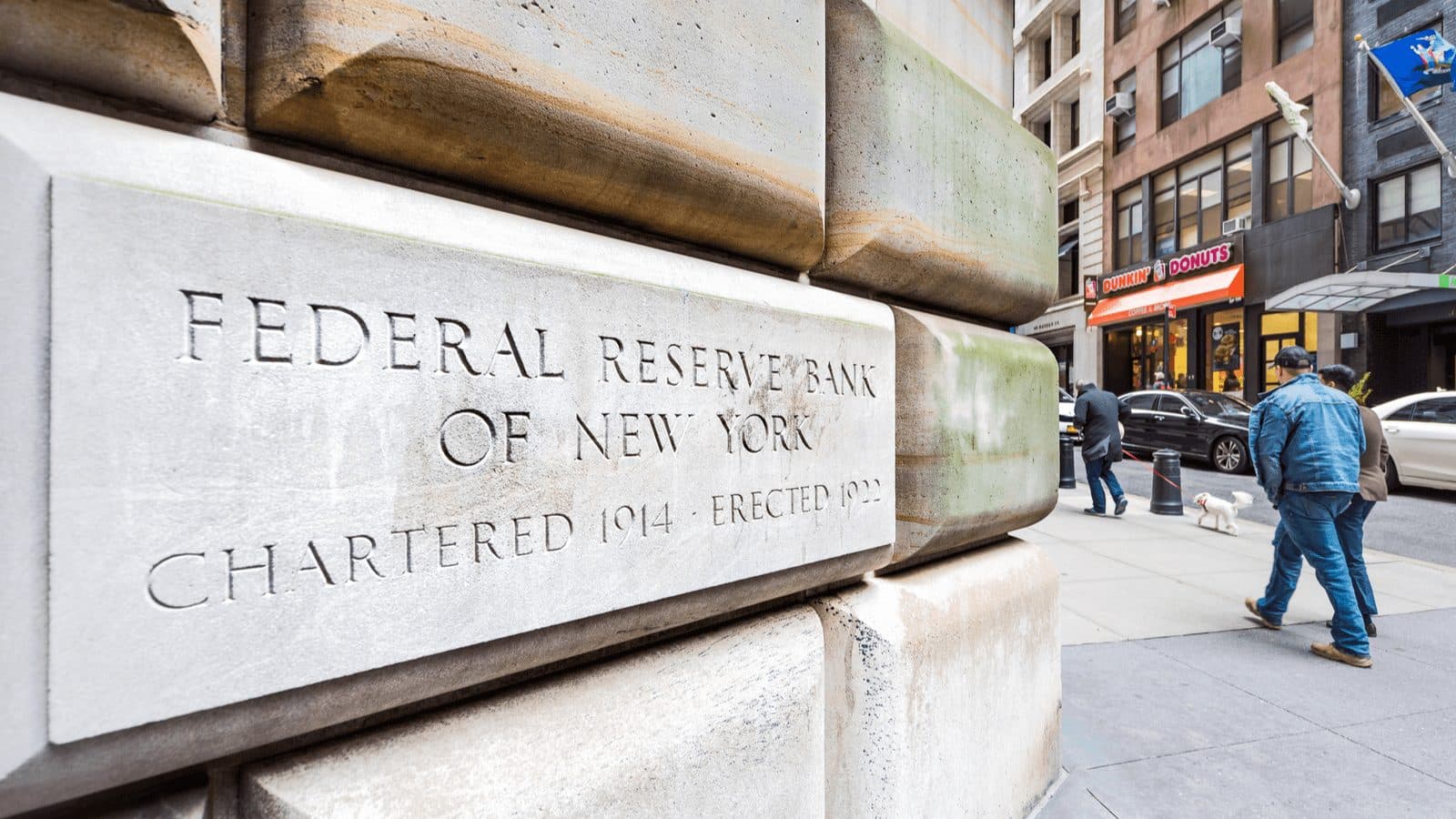Stablecoins Are Not the ‘Future of Payments’, Say NY Fed Economists
WATCH LIVE: “Digital Assets and the Future of Finance: The President’s Working Group on Financial Markets’ Report on Stablecoins”

Federal Reserve Bank sign closeup in downtown lower financial district Manhattan, NYC | Credit: Shutterstock
- Stablecoins, whose value is either fully backed by safe assets or not, could tie up liquidity in other areas of the traditional financial sector, according to a group of NY Fed economists and analysts
- The group is advocating for tokenized deposits hosted on DLT systems that would represent a claim on the depositor’s commercial bank instead
A group of analysts and economists from the Federal Reserve Bank of New York said Monday stablecoins were “unlikely” to become the future of payments despite their rapid rise in recent years.
In a Liberty Street Economics column, published on the Fed’s blog, the group said that while stablecoins were designed to be a better form of money than other cryptocurrencies, like bitcoin, they may be a “double-edged sword.”
Stablecoins are cryptos whose values are pegged to particular commodities like gold or fiat currencies, such as the US dollar and euro.
Specifically, the group, which included former NY Fed Vice President Rod Garratt and Fed economists Antoine Martin and Michael Lee, said stablecoins that are backed 100% by “perfectly safe” assets could tie up liquidity in other areas of banking.
Stablecoins that were not backed and did not tie up liquidity resembled private banknotes from bygone eras, resulting in a “risky and less fungible” product.
“These types of private monies were subject to various problems, notably because issuers and the assets backing them were of uncertain and divergent quality,” the group said.
Instead, the NY Fed is advocating for tokenized deposits rather than stablecoin circulation.
“Bank depositors would be able to convert their deposits into and out of digital assets — the tokenized deposits — that can circulate on a [distributed ledger technology] platform.” The tokenized deposits would represent a claim on the depositor’s commercial bank, much in the same way a regular deposit does, the group said.
Their stance comes as no surprise, given their institution’s history of taking a hardline approach to crypto regulation alongside recent stablecoin growth, from $5.7 billion in December 2019 to $155.6 billion in January 2022.
Indeed, stablecoins have begun to disrupt the remittance and cross-border payments sectors across multiple economies. They are also considered a threat to the US’ economy and financial stability, among other nations. Last year, US Federal agencies called on Congress to allow them to regulate stablecoin issuers in the same way they regulate banks.
The group’s column comes a day ahead of a US House of Representatives Financial Services Committee hearing titled “Digital Assets and the Future of Finance: The President’s Working Group on Financial Markets’ Report on Stablecoins.”
The hearing will center on the swift growth of pegged cryptos while discussing findings from the report by the president’s working group, which determined in November that stablecoins pose legal, regulatory and oversight challenges.
Live at 10 am ET
Get the news in your inbox. Explore Blockworks newsletters:
- The Breakdown: Decoding crypto and the markets. Daily.
- 0xResearch: Alpha in your inbox. Think like an analyst.






